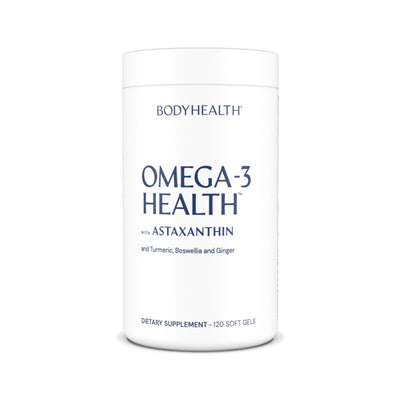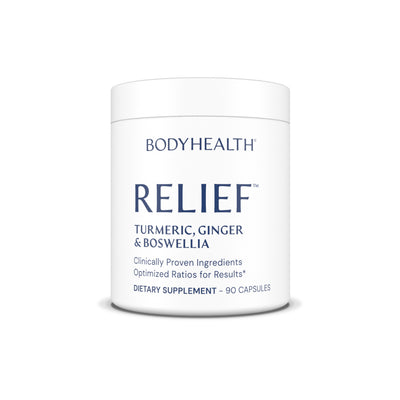The Stress Protocol & Checklist
May 01, 2023 5 min read

Stress, whether it’s physical, mental or emotional, can lead to:
- Delayed healing responses in the body
- A nervous system that is always “on”
- Worsened mood
- Inability to relax or fall asleep
- Decreased mental alertness or lowered ability to “think”
- Hormonal imbalances
- Cravings for sugary foods
- And high cortisol levels which increase mental stress, lower our energy levels, and make it harder to lose weight, build muscle or recover fully from the daily load we put on our body
It doesn’t matter much “where” the stress comes from, as any point of stress triggers the same reactions in the body.
Even more, stress from any one of these three areas (physical, mental or emotional) raises stress in the other two areas.
For example, illnesses, injuries, and even the micro-injuries in our cells from daily activity, raise cortisol levels, which can lower our mood and make us feel stressed and less able to deal with the problems of life.
That’s physical stress raising emotional stress.
Or, someone suffering from a series of emotional shocks can start to do worse physically. Cortisol levels rise, sleep becomes harder, cellular recovery slows and overall health worsens.
Or, someone working late trying to solve problems at their job spurs cortisol production, leading to worsened mood, poor sleep and poorer overall health if continued too long.
No matter the type of stress, the same or similar reactions occur in our body as a response, leading to lowered overall health in the short-term, and continued worsening health if the situation persists.
But, just as stress in one area creates stress in another area, with each point of stress making the overall worse, it also works in the opposite direction.
Each point of stress we remove lightens the load overall and makes it easier to deal with the other points of stress.
Below, you’ll find a stress “test” which we can use to assess where we’re at, as well as a stress protocol we can use to pinpoint and address key stress points, thus lowering our overall stress levels.
It’s very simple. Let’s see where we’re at!
DETERMINING OUR STRESS LEVELS
With the following checklist we can measure our approximate stress levels and see where we can improve them.
This is not some standardized test, just a self-evaluation which allows us to see where we have weak points we can improve to raise our overall health, energy levels and mood for a more enjoyable day-to-day life.
There are ten questions covering different areas of stress.
The checklist is done by marking a number between 1 and 10 for each question.
These numbers, added up, then give you your stress score between 10 and 100.
10 would mean an individual is completely relaxed, high energy, sleeps well, has no problems dealing with the daily stresses of life, is very alert mentally when they want to be and generally feels great.
100 would mean the opposite.
While a score of 10 would be realistically impossible, as life does happen, how close we can get to 10 determines our overall future health, fitness, energy levels and mood.
And by seeing where we’re weak, we can address these weak points and bit by bit lower our overall stress levels.
Here we go:
-
How easy is it for you to relax physically?
(1 equals “very easy” and 10 equals “very hard/impossible.”) -
How easy is it for you to relax mentally?
(1 equals “very easy” and 10 equals “very hard/impossible.”) -
How easy is it for you to fall asleep?
(1 equals “very easy” and 10 equals “very hard.”) -
How deep is your sleep?
(1 equals “very deep” and 10 equals “very light or broken sleep.”) -
How refreshed do you feel when you wake up?
(1 equals “fantastic, very refreshed” and 10 equals “not at all, terrible.”) -
How are your energy levels during the day?
(1 equals “high/very good energy” and 10 equals “very low/no energy.") -
How mentally alert are you during the day?
(1 equals “very alert” and 10 equals “complete brain fog/inability to think fast.”) -
How calm do you feel during the day?
(1 equals “very calm and even-keeled” and 10 equals “not calm at all.”) -
How easily upset are you by bad news?
(1 equals “It upsets me, but I’ll be okay” and 10 equals “I get very upset, it feels too much.”) -
Do you feel sore during the day?
(1 equals “not much, not usually” and 10 equals “very much, most of the time.”)
FINDING YOUR "SCORE"
Add up each number from the above questions to find your stress score.
If you’re in the 20’s or 30’s, you’re doing very well.
However, from 40 on up, we can predict that there are, or will be in the future, stress-related health troubles.
And we can nip them in the bud now!
THE STRESS PROTOCOL
This is a very simple protocol, so don’t look for any complexity here. That’s not what we want. We want it nice and simple and… stress-free.
For the next two weeks do this daily:
- Eat no packaged food, only natural foods.
- To the best of your ability avoid sugars, especially processed sugars.
- To the best of your ability eat only organic foods.
- Drink 6-8 glasses of water daily (dehydration raises cortisol levels).
- If you have any elimination troubles, use Eliminate.
- Make yourself be in bed for 7-8 hours per night.
- No alcohol.
- No grains or dairy.
- In your diet, emphasize protein (natural proteins): meat, fish, eggs at each meal (low protein raises cortisol, higher protein lowers it).
- Take 4 servings of PerfectAmino daily, two in the morning and two in the afternoon.
- Take 3 Omega 3 Health daily.
- Take 2 Relief in the morning and 2 in the evening.
- Take 2 Probiotics with breakfast and dinner.
- Take 1-2 Digestive Enzymes with each meal.
- Take 2 Sleep at night 1hour before bed.
- Take one serving of Multi Complete morning and night.
- Don’t read the news.
- Go for a 30 minute walk a couple of hours before bed daily. During this time don’t think about problems, just look out at your environment around you until you feel calmer and more relaxed, even if just a little bit.
- Keep your phone out of your bedroom. Stop looking at your phone at least an hour before bedtime.
- Turn off the breaker to your bedroom before going to sleep.
If it seems simple, that’s because it is — intentionally.
Don’t complicate it.
Some things may be harder to do. That’s fine. Don’t stress yourself about them.
Just do your best to do as many of the above things as you can on a daily basis for two weeks.
And then see how you feel, physically, mentally and emotionally.
I think you’ll like it.
Articles by Health Topic
Your Path To Better Health Starts Here!
From in-depth articles on nutritional benefits to updates on new product launches, stay informed and inspired on your journey to optimal health.
*These statements have not been evaluated by the Food and Drug Administration. These products are not intended to diagnose, treat, cure, or prevent any disease.





